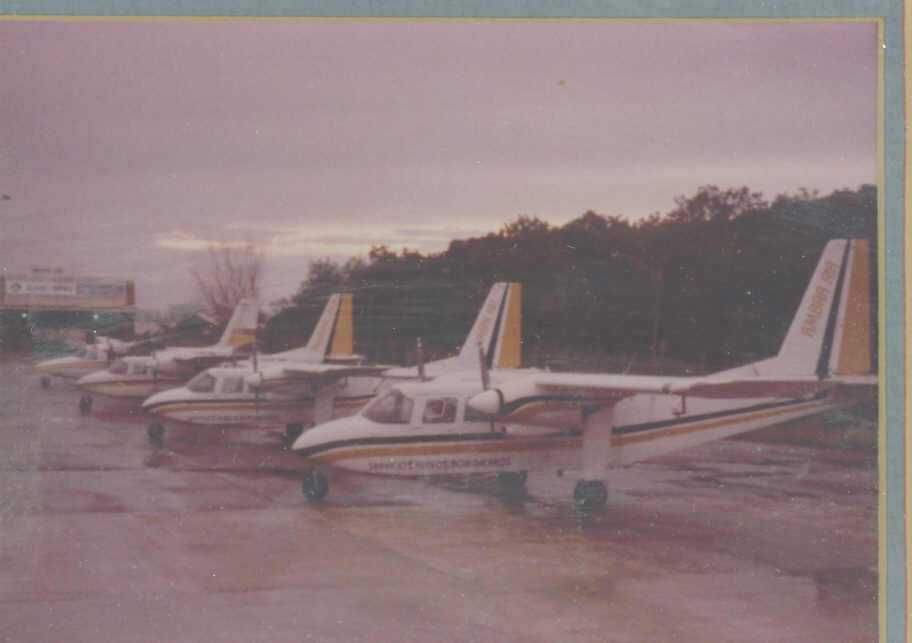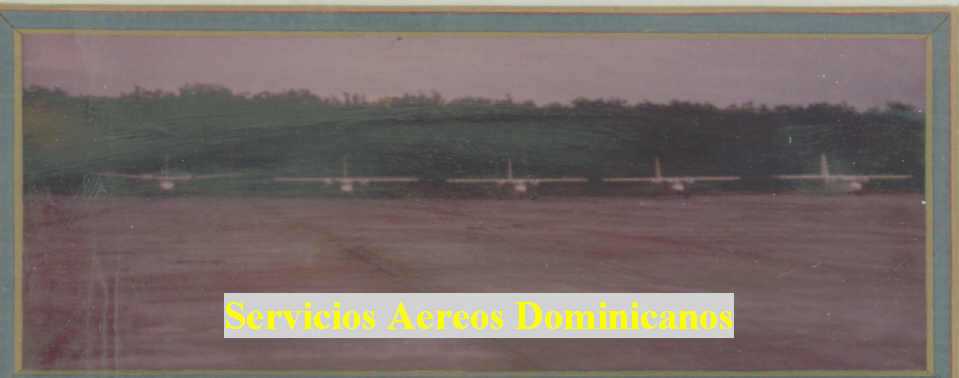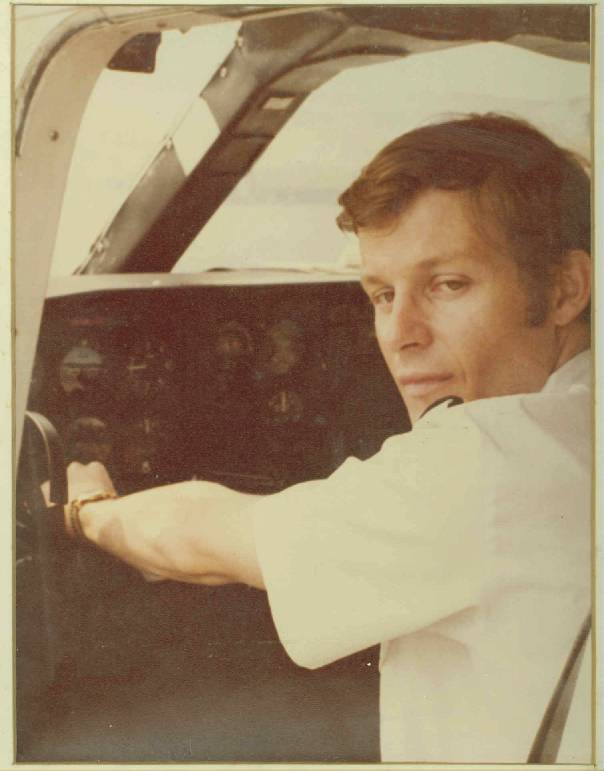
DORADO WINGS and MORE............
From 1975 Apostol worked with various air taxi operations helping them grow or obtain aircraft together with his partner in 20 Nova 7 Ltd., Geoffrey Ross. Apostol worked with Westair in California and eventually arranged the sale of a Britten-Norman Trislander to another of his clients, Air Turks and Caicos. He joined with the Britten-Norman representatives to promote the sale of the aircraft throughout the hemisphere. In Mexico, he worked to create Air Cozumel with the Barbachano family who had owned Aero Mexico earlier. He helped set up air taxi operations in Ecuador and also Peru before becoming a founder of Flamenco Airways in Culebra, Puerto Rico with Ruben Velez and Benjamin Rivera. Ross had been active in providing charter aircraft to major musicians and touring rock n' roll groups since the early 1970s. The operation was based at Sikorsky Airport in Bridgeport, Ct. and used primarily Convair 240 and 440 aircraft.

The Crownair concept began at Sikorsky Airport in 1979 and incorporated micro computer use with slick promotional appearance to give their small airline a big airline look.
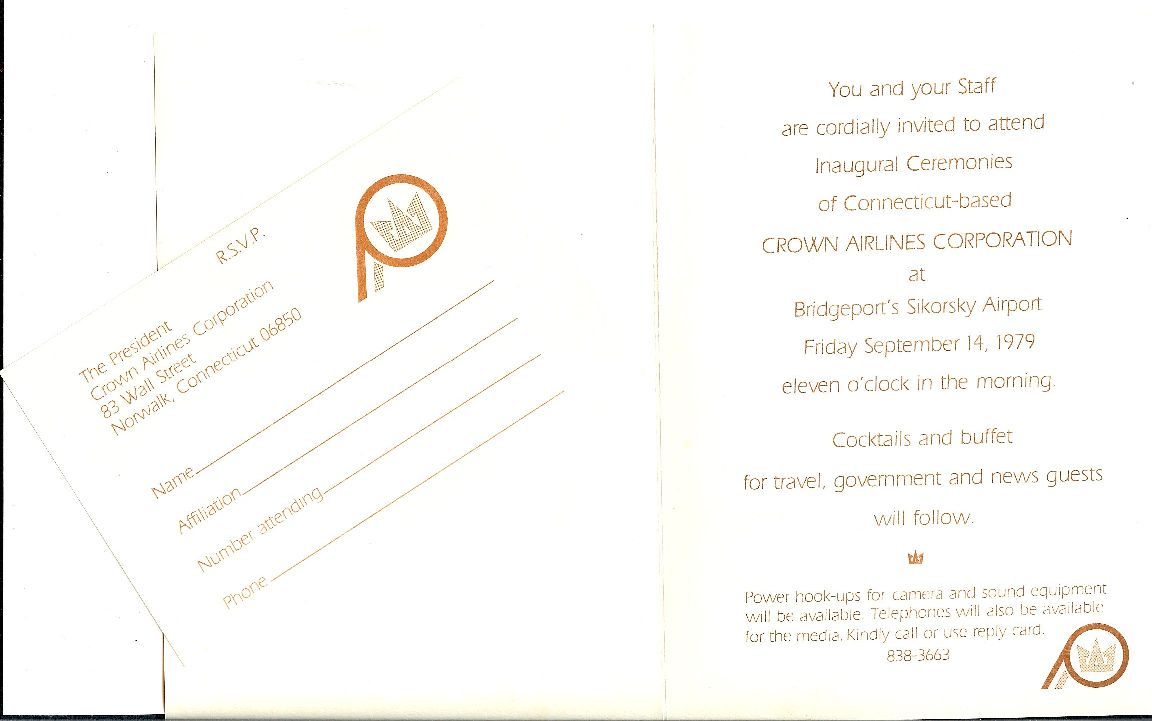
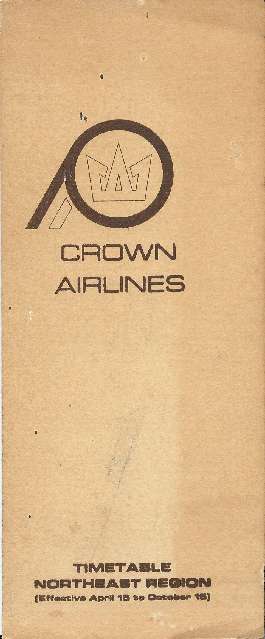
Apostol worked with Seattle based software developers to create a mini-MARS software suite that travel agents could access from micro computers. The MARS system was the travel industry reservation system developed by TWA to compete with the mainframe based SABRE system developed by American Airlines.
The new mini-airline began by serving Nantucket and Block Island, Montauk on Long island and the La Guardia and Sikorsky Airports and then added Hartford and even Atlantic City.
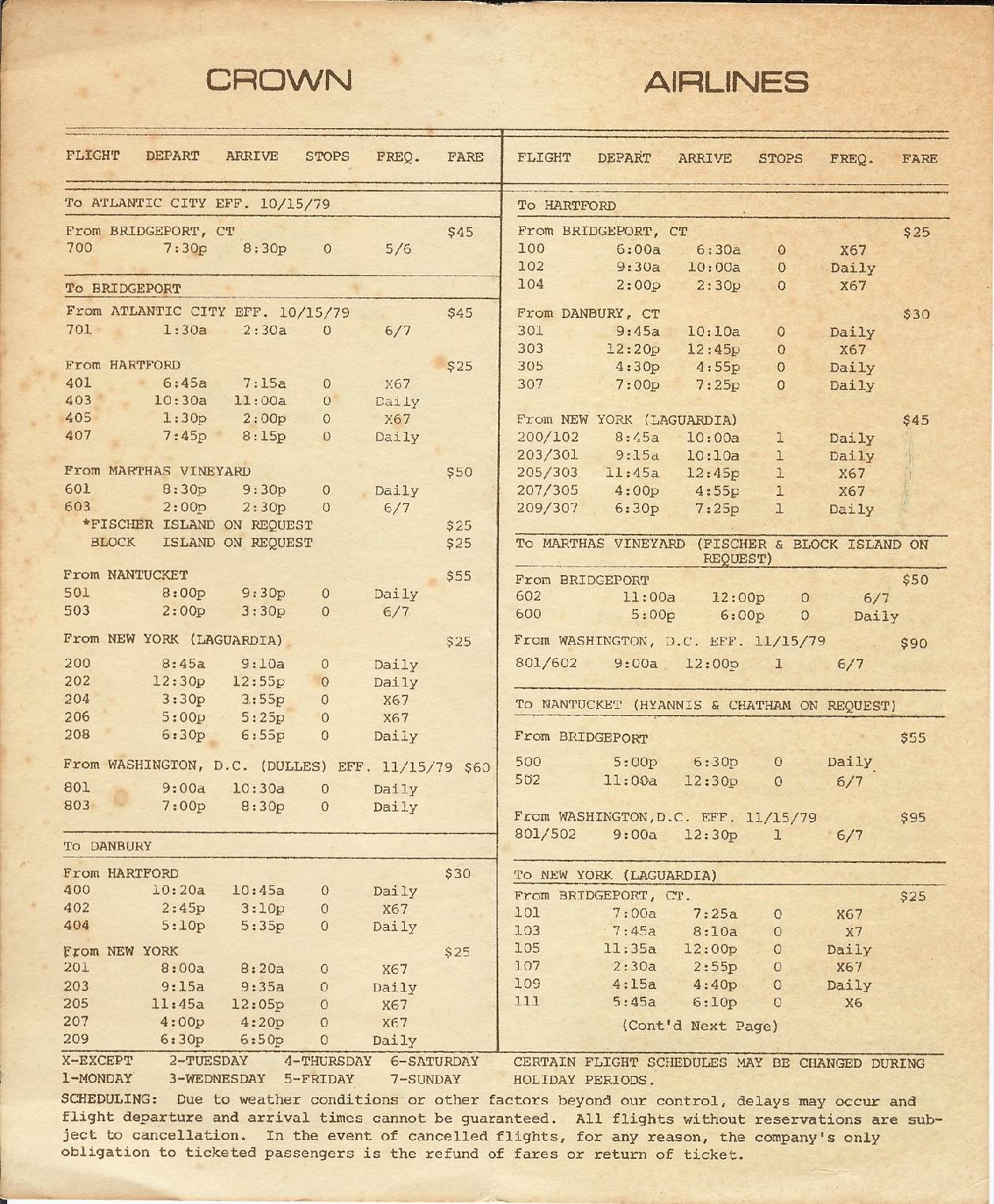
Crownair was expanded to Hilton Head Island in 1979. The operation built on an existing local commuter airline and expanded to include 5 aircraft serving routes from Hilton Head to Charleston, SC, Savannah, GA and a short run to Beaufort, SC. The initial northeast routes were only profitable for approximately 4 months due to weather mostly. Operating from Hilton Head offered the hope of at least another 4 months of utility. However, the traffic was still inadequate to sustain a full fledged operation and following the passage of Hurricane David, it was evident a route structure further south was necessary.
Nevertheless, their novel approach and their ideas to develop small airline operations to feed larger or longer haul airlines landed them on the front page of VENTURE MAGAZINE - the bible for entrepreneurs and venture capitalists in those early days.
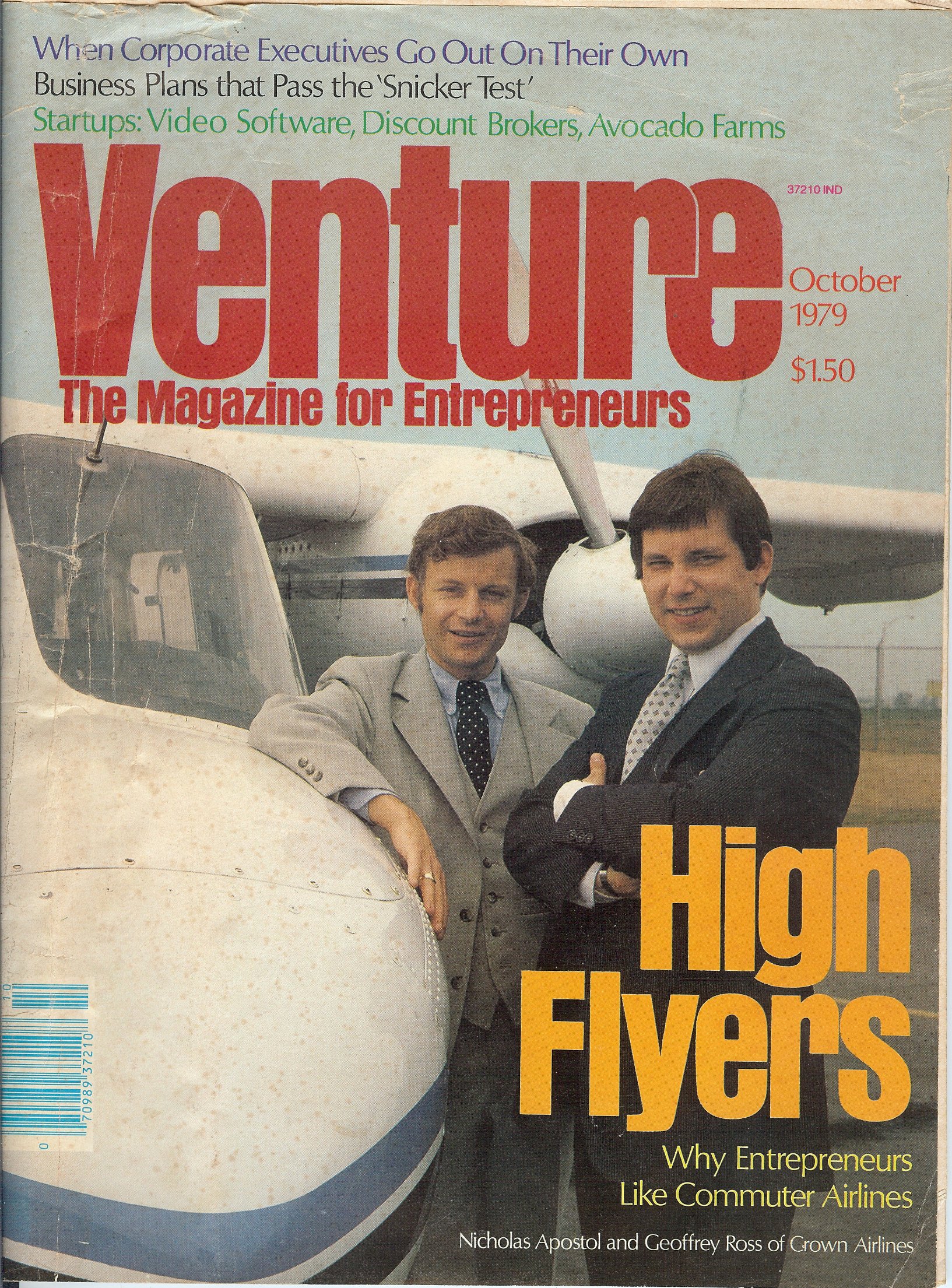
Apostol had been talking to Hank Wolfe owner of Dorado Wings for some time about the possibility of a merger or acquisition with his Flamenco Airways. Wolfe had begun the business in the late 1950s at the behest of Lawrence Rockefeller and was now suffering from cancer and heart problems. Apostol had been a founder of Flamenco Airways in 1976 with Ruben Velez and Benjamin Rivera, so he knew the Caribbean market potential well and knew that the tourist and island hopping traffic existed all year long. Serving exclusively the Rock Resort properties at Dorado Beach and the new Cerromar complex, the airline flew routes to Virgin Gorda and Beef Island in the British Virgin Islands and St. Thomas in the USVI.
Dorado Wings had over a dozen aircraft and was preparing to introduce some new age British built turboprop aircraft. Most of 1980 was spent by the two entrepreneurs in securing a financial partner. They joined with a leasing firm in New Jersey which specialized in tax shelter computer leases of primarily IBM mainframe computers. Among other equipment leases, they had arranged the first three B-737 leases to help create Air Florida. The General partner of the tax shelter based business, George McCandless, brought in Kenneth Pontikes who owned a computer leasing enterprise, COMDISCO, in Chicago. An associate of McCandless, a west coast venture capitalist, Walter Strycker, also became a partner and in April of 1981, Crown Air took over Dorado Wings at a cost of just over $2 million. The purchase included 7 Islanders for which the airline was renowned, a Piper Navajo, a Piper Aztec, a small Cessna 170 and three British turboprops recently acquired from Air Illinois.
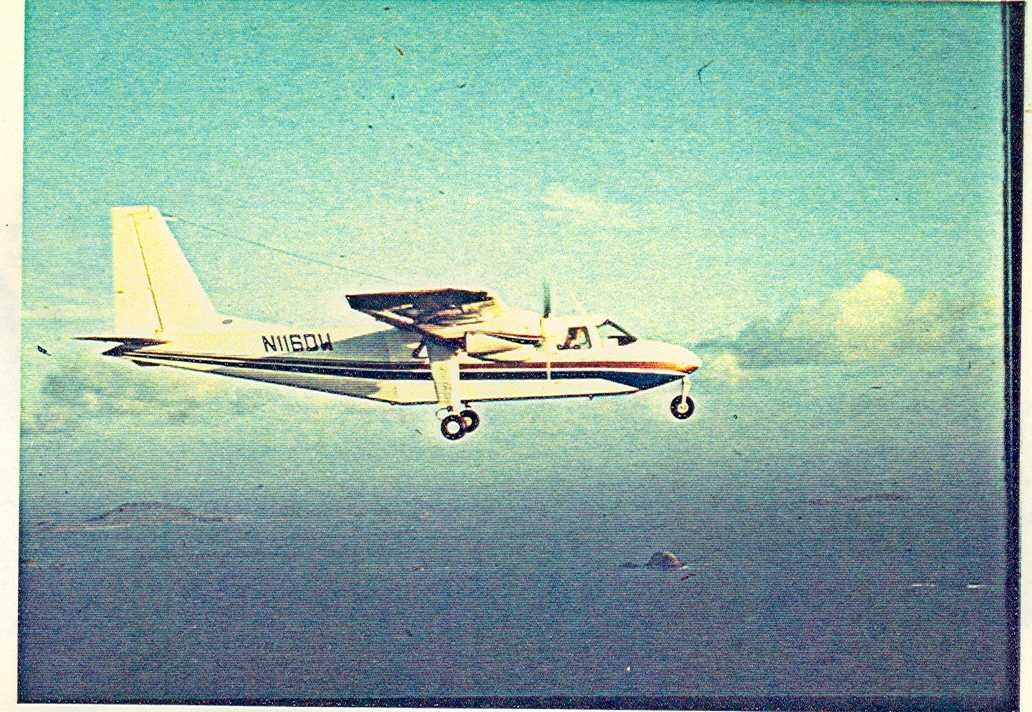
The Islander in flight that would become involved in the crash in late July 1981
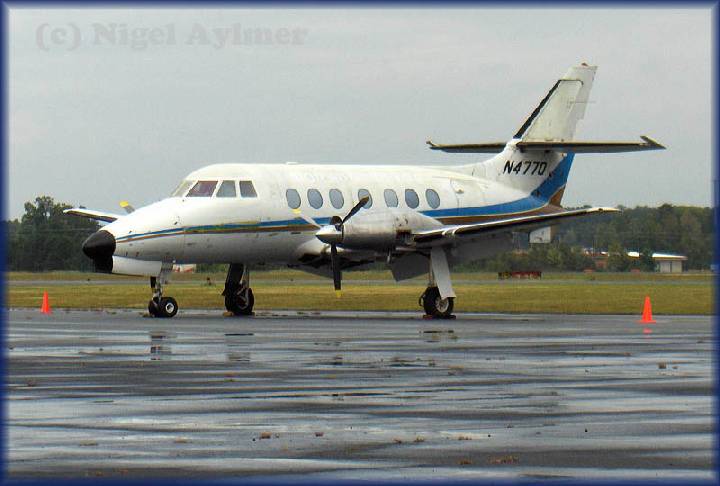
One of the first expansions was to Mayaguez and direct competition with Prinnair, Puerto Rico's main commuter airline and at the time the world's largest commuter airline with over 30 aircraft carrying 12-18 passengers each. Soon followed routes to Vieques, Culebra, St. Croix, USVI and then St. Maarten and La Romana in the Dominican Republic.
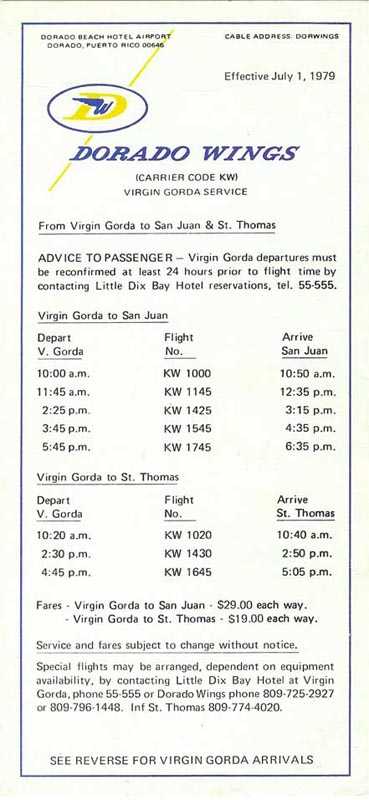
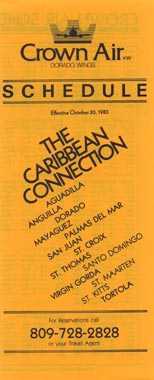
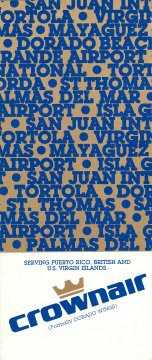
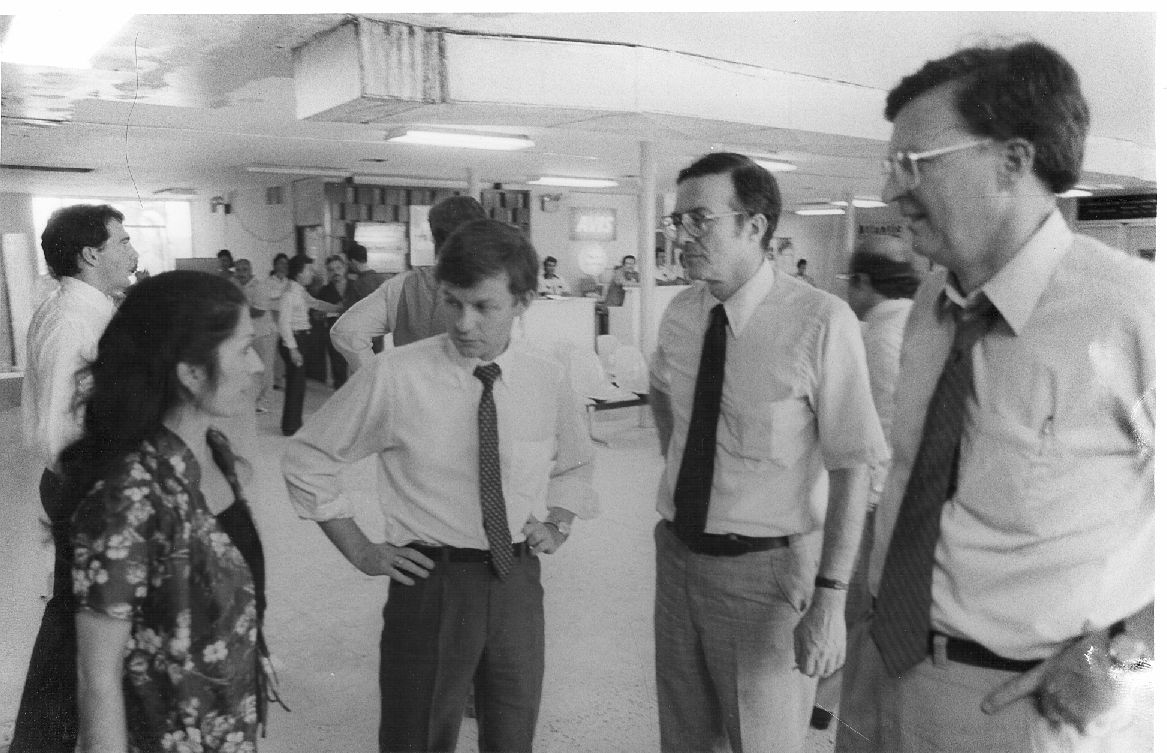
(L to R) Mayaguez Station Mgr, Apostol, Strycker, McCandless)
Late on the evening of Monday, 20 July 1981, Apostol returned from Mayaguez to San Juan and together with several Company employees climbed aboard a Dorado Wings Britten-Norman Islander, Registration N116DW. Apostol was the Pilot-in-Command and in the passenger seats behind him were Michael Miller, Reservations Manager, Howard Gulack, Flight Operations manager, and two mechanics. At 10:07 PM, the aircraft taxied out to runway 07 and began to take off into the starlit sky. Within seconds it encountered the wake turbulence of a just departed Pan Am L-1011 and it was lifted some 300 feet into the air and as abruptly as it started, the lift vanished and Apostol had all he could do to effect a controlled crash. Everyone escaped the wreckage which amazingly did not catch fire. The passengers suffered minor lacerations mostly post-accident related while Apostol had to be extricated and was hospitalized with crushed L5/L6 vertebrae, lacerations and a broken nose.
Britten-Norman Islander N116DW
lays on its side the day after the crash
Apostol was so intent on keeping the aircraft level that he broke the control Yoke off in his hands. The wing area hit first absorbing much of the impact and the cockpit area was twisted 90 degrees. A shard of metal came within inches of piercing his brain. The rescue crews reached in through the door and pulled Apostol out by his arms.
He was taken to the closest hospital usually used for DUI and shooting cases because he was bleeding so badly that the ambulance driver was angry about the mess in his ambulance.
He arrived there about midnight and was left on a gurney. An orderly passing by saw that Apostol had a broken nose and swiftly put the nose back in place. After a few hours, Apostol's attorney and Walter Ames, marketing Director for Dorado Wings who lived nearby, came to the Hospital. No ambulance was available to take Apostol to the Rio Piedras Medical Center as should have happened. Apostol ordered his staff to go an buy an ambulance.
In the meantime, Apostol's attorney called the Governor (Romero Barcelo) to see if he could release the Governor's private room at Doctor's Hospital for use by Apostol. At 3 AM Apostol was finally admitted to the hospital and occupied the Governor's room.
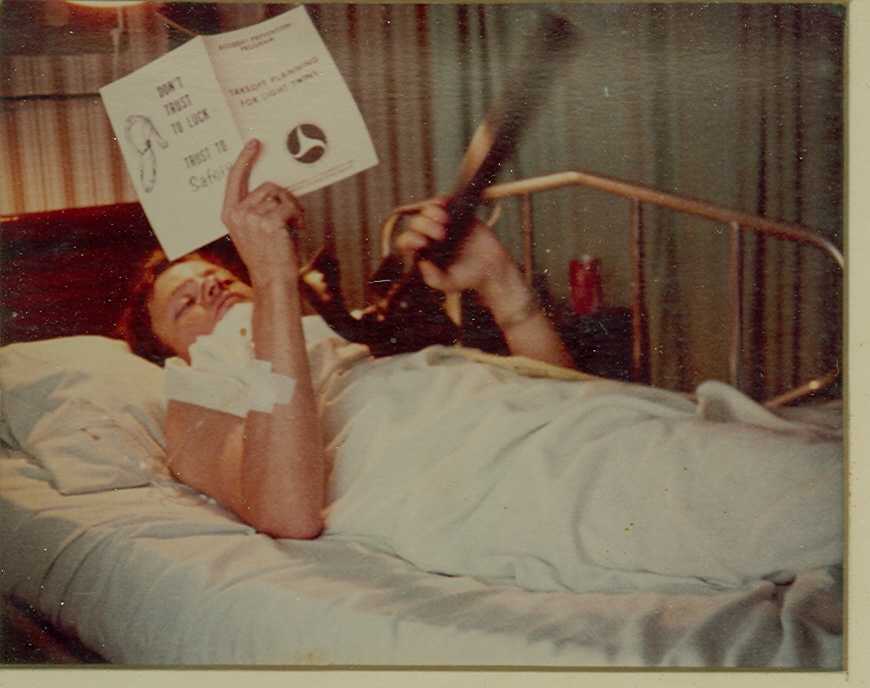
Apostol recovered quickly. He went to Palm Springs, CA and spent two weeks at a hotel run by a friend of his. He spent an average of 14 hours per day in a hot tub . In November he took his first flight following the accident and by early 1982 regained his pilot license privileges again. Apostol filed suit against the US Government because the FAA had failed to provide the required 3 minute separation between a large and small aircraft operating from the same runway. The claim was that the wake turbulence caused by the L-1011 had been responsible for the premature liftoff of the smaller Islander. The Federal Judge in the case denied Apostol's expert witness and claimed he had his own expert knowledge being he had recently obtained his FAA Private License. In addition, it was determined that the same newly appointed Federal Judge was seeking to obtain an additional rating from the FAA. Apostol's claims were denied and an Appeal went nowhere.
Walter Strycker had never been a supporter of Apostol and early on had tried to promote a young, inexperienced protégé of his, James Quinn, to lead the new enterprise. In addition, soon after taking the helm of Dorado Wings, Apostol had hired the former FAA Director for the Region, Michael Fenn, as executive vice president. However, the seasoned government executive saw little comfort as number two to such a young, brash entrepreneur. With the accident only hours old, these three conspired to replace Apostol with Quinn as CEO by telling the other two partners that Apostol would not recover and a new CEO was needed immediately. By the time Apostol walked out of the hospital, Apostol had been replaced and was out. The remaining group even neglected to issue the Stock representing his 33% ownership. McCandless and Pontikes had no interest in the airline and only saw benefit in the tax shelter aspects. They quickly sold the aircraft to trusts in the name of Pontikes' children at ridiculous prices and then leased the aircraft back at inflated lease rates. Quinn ran the airline while living lavishly and relishing his role as president of the airline. Employees became involved in drug trafficking and selling the vast stock of parts for personal enrichment. In the end, the airline's assets had been looted and it failed from gross mismanagement. Pontikes, McCandless and Strycker tried to claim misrepresentation by Wolf in the initial sale and withheld their final payment due Wolf. The lawsuit that ensued was finally settled but the airline was finished.
In the late 1990s, the airport where the airline had been based on the Dorado Beach Hotel property was sold and became a high-income home development. All that remained was part of the original Quonset Hut hangar and 100 meters of the original runway which exists to this day as a recreation park and museum. The Museum contains the actual Cessna 170 that DW had and memorabilia from Clara Livingstone, the famous 1920s aviatrix and daughter of the original owner of the Dorado Beach plantation.
The airport was originally built by Livingstone, one of the first females to hold a Pilot's License in the US. She was a friend of Amelia Earhart who actually departed from the Airport on her ill fated around the world trip that ended when she vanished somewhere near Borneo.
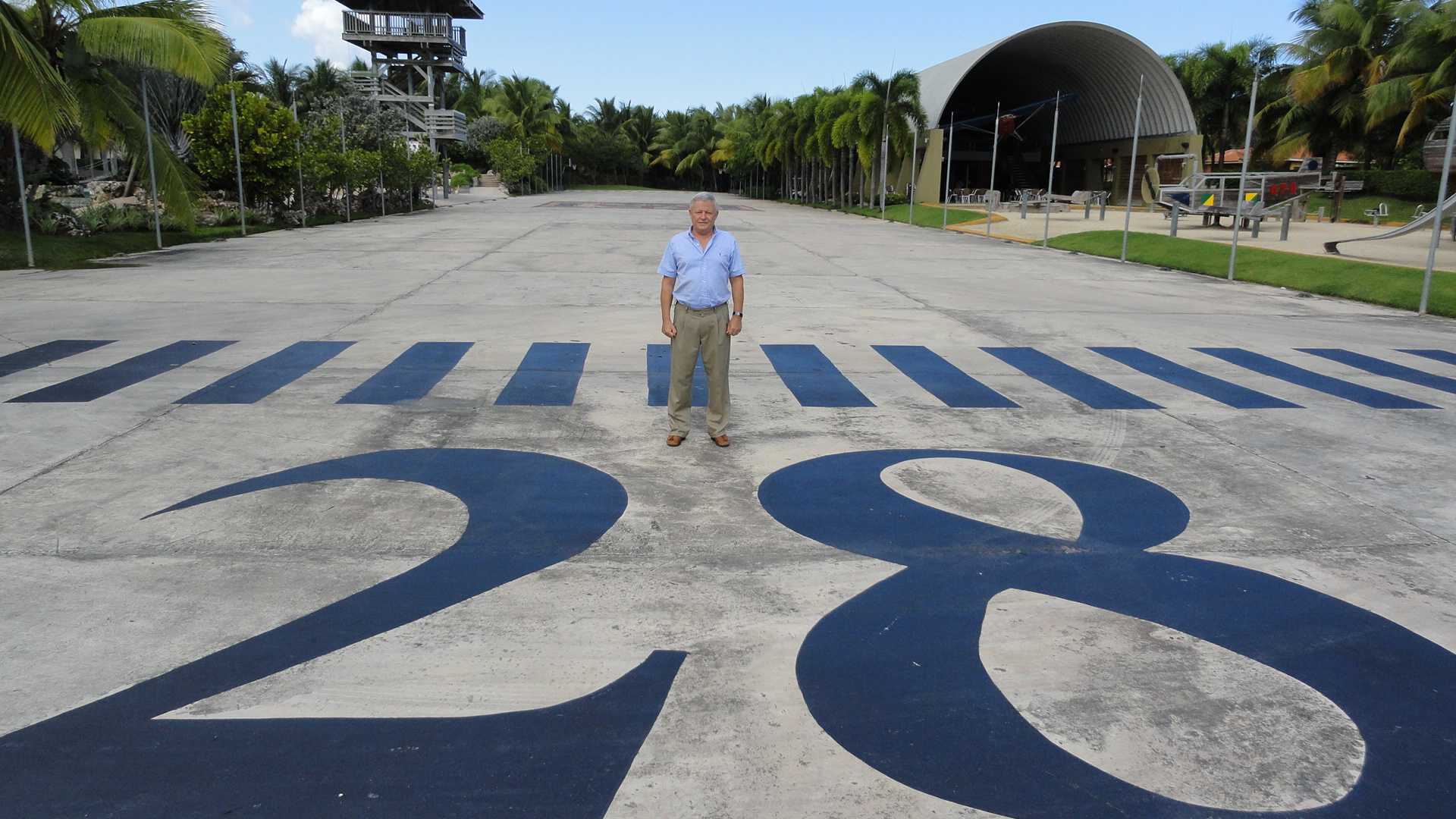
Apostol stands on what remains of Runway 28 at Dorado beach Airport 30 years later
In 1983, Apostol joined with some Alaska based entrepreneurs and set up another Commuter Airline, this time in the Dominican Republic. It was called Servicios Aereos Dominicanos. They worked with Pappi Bermudez in Santiago to develop service from Santo Domingo (both Las Americas Airport and the La Herrera downtown airport). He also provided charters to Palmas del Mar and nearby Islands. Among other services, he would carry the TNT (Dynamite) from Puerto Rico to Tortola, BVI.
The fleet consisted of four 10-seater Britten-Norman Islanders and a 7-seater Aero Commander 500S Shrike.
